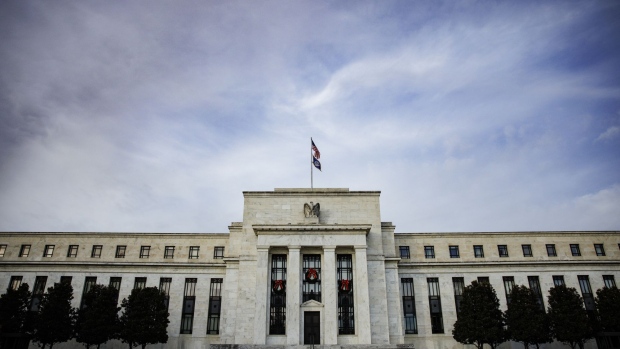Aug 11, 2022
Leuthold’s Paulsen Says Markets Should Ignore Fed as Financial Conditions Ease
, Bloomberg News

(Bloomberg) -- Veteran investor Jim Paulsen says stop worrying whether the Federal Reserve is done raising interest rates because the tightening cycle for financial assets has already ended.
“I don’t really care what the Fed is going to do because the Fed isn’t driving this ship,” the chief investment strategist at The Leuthold Group said in a Bloomberg Television interview Thursday. “If I look at what’s happening, we’re already into a brand new easing cycle right now. Do you want to miss an easing cycle?”
A falling dollar, rising yields and slowing money and fiscal growth suggest that financial conditions -- a measure of stress across assets -- have already started to ease, even as the Fed raised rates 2.25 percentage points since March. Paulsen said financial conditions will continue to improve as inflation comes down.
US stocks extended a rally on Thursday and bond yields fell after the government reported producer prices unexpectedly dropped in July for the first time in more than two years. That followed Wednesday’s softer-than-expected US inflation data.
Yet Federal Reserve officials remain resolute on the need for further interest-rate increases. Paulsen said the central bankers are getting it wrong.
“The case for additional Fed tightening is rapidly dissipating,” the strategist said. “It’s interesting how much attention we devote to the Fed because the Fed has been behind the curve the whole time. Fortunately, inflation is coming down today not because the Fed lifted the funds rate for the first time in February this year, because monetary growth, fiscal growth, dollar growth, yield growth, were tightening all last year and that’s what’s bringing a slower economy and slower inflation.”
Wednesday’s report showed consumer inflation in July decelerated by more than expected, pushing the benchmark S&P 500 index to a three-month high. The consumer price index increased 8.5% from a year earlier, cooling from the 9.1% June advance that was the largest in four decades. Prices were unchanged from the prior month, with increases in food and shelter costs offset by a decline in gasoline.
For Paulsen, the key question now is how long prices for goods and services will remain elevated.
“I think the debate on ‘inflation has peaked’ – I think that’s over,” he said. “The Fed is still behind the curve but all the markets are going the other way and starting to ease. That is about a one-year lag policy has on the economy and inflation. And that lag is going to continue to be negative moving forward.”
©2022 Bloomberg L.P.






